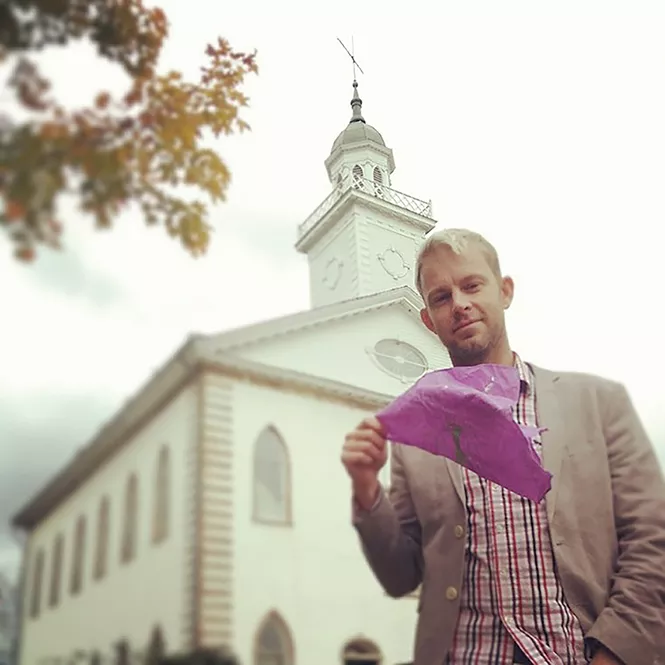
- Michael Adam Ferguson
Three and a half years ago, historians J. Seth Anderson and Michael Adam Ferguson were the first same-sex couple to be legally married in Utah. So it seems natural that Anderson, 35, would pen a book about LGBT Salt Lake (also its title), published this month by Arcadia Press. While he doesn't use the word "gay," the Provo native with deep pioneer roots knew he was different from other boys at age 7. And at 11, "I knew the word was 'gay' and I knew that my church told me it was a very bad thing to be," he says.
What's 'gay' about Salt Lake City?
I actually prefer the term queer, meaning 'peculiar, odd or unusual.' Salt Lake is very queer in the way that it defies binaries. It's both worldly and parochial, liberated and oppressive, and simultaneously a small town and a big city. It defies expectations, and those of us who are from there or live there know this is true. Outsiders oftentimes mistake it for a sleepy little place.
What was your most surprising finding?
I was pleasantly surprised to find a photo of the Crystal Lounge and a streetscape view of the Radio City Lounge dated from the late 1940s. Both of these places were frequented by the gay and lesbian community in the post-World War II era and are generally considered to be Utah's first gay bars. I've read about these places for years, but had never seen a photo from the time period.
Any other unexpected revelations?
Through one of my contacts, I found a flier dated around 1965-66 promoting a drag show act billed as 'The Missfits.' There is [also] a photo of three men in drag who performed at the Tin Angel on State Street.
What prompted you to write about the subject?
I'm primarily a 20th-century American historian with an emphasis in the history of sexuality. As a grad student at the University of Utah, my research explored the history of HIV/AIDS in the state. This required discovering the hidden history of what we would now call the LGBT community in Salt Lake. Most people don't realize how far back that history goes, and I wanted to share that knowledge and those stories.
You're also active in fighting so-called reparative therapy.
That's correct. My husband and five other plaintiffs sued a conversion-therapy provider. They were represented by the Southern Poverty Law Center in a landmark case. After a three-week trial in 2015, the jury found the defendants liable for consumer fraud. We continue to speak and educate people about conversion therapy; we have testified before legislatures, and have even lobbied on Capitol Hill in D.C.
You have a home in Ithaca, N.Y. What's the connection?
My husband and I are both academics and we moved to Ithaca for his post-doctoral fellowship at Cornell University. We are headed to Boston soon, where he will begin a second fellowship at Harvard, and I will begin my Ph.D. program at Boston University. We live a very queer life, though, and Utah will always be a home, no matter where we go.